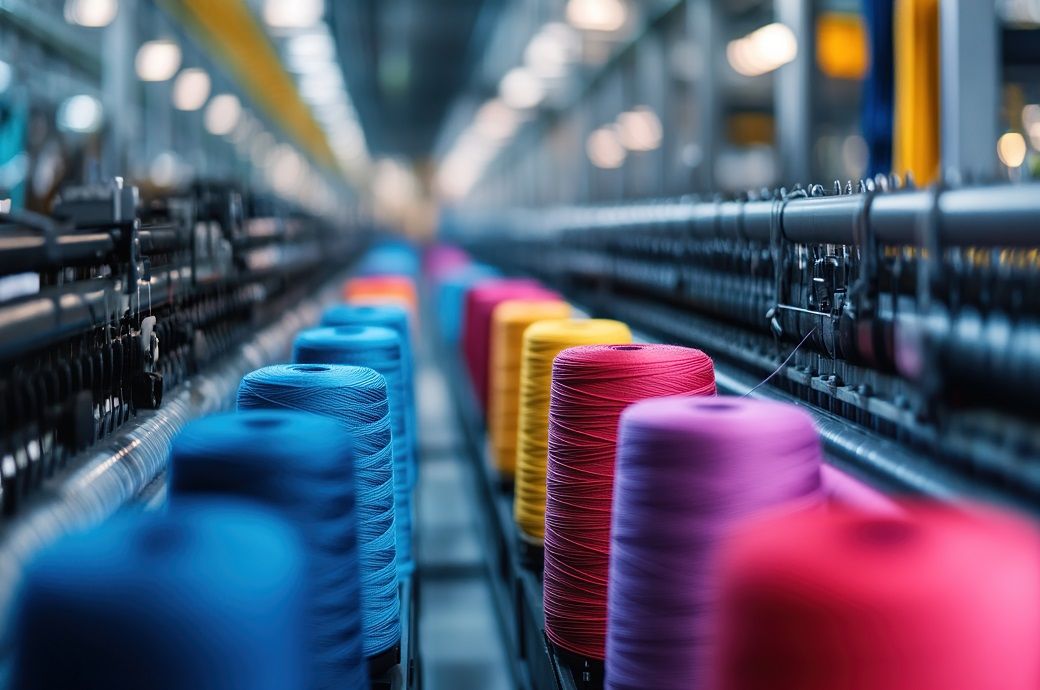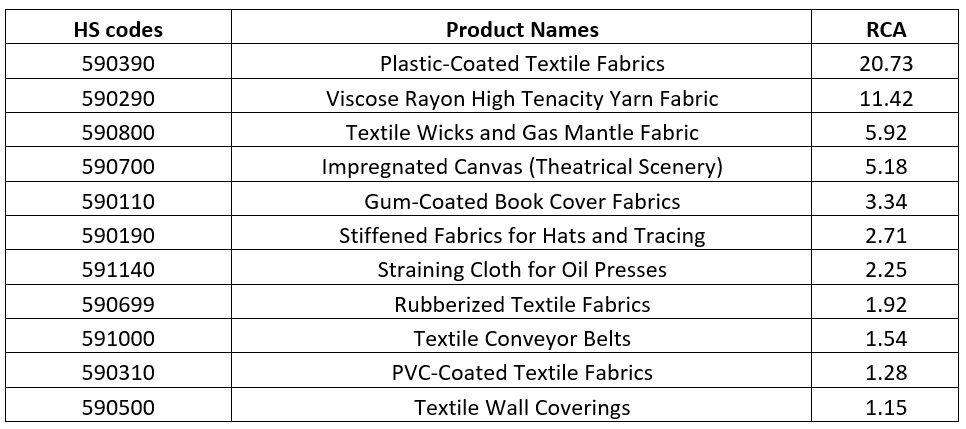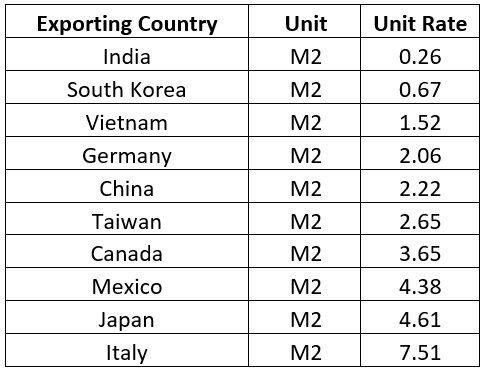
The US has increasingly allocated most of its expenditure towards the defence, healthcare, and social sectors. The defence and healthcare sectors, in particular, use industrial textiles, and with Trump’s hope of rejuvenating the US manufacturing sector, industrial textiles will play a crucial role in building the US economy, which plans to be self-reliant in the future.
Exhibit 1: Top 10 exporters of industrial textiles to US in CY 2024 (Jan-Nov) (in $ mn)

Source: TexPro, F2F Analysis
The data describes the top 10 exporting countries of industrial textiles to the US. The US currently imports $2,885 million worth of industrial textiles worldwide, one of the highest on a global level. However, the exporting countries form a unique amalgamation of neighbouring USMCA countries as well as several emerging giants of the Asian region. Mexico, China, and Canada, in particular, export large amounts of industrial textiles to the US—three countries that have also come under scrutiny for the benefits they receive from the US market.
For China, the world’s largest exporter of textiles, the US has maintained a negative stance due to its increasing trade surplus with the US. China's harmful and unfair economic practices, including trade in illicit goods, use of forced labour, and theft of sensitive technologies, pose risks to US economic and security interests. The Trump administration has made clear indications regarding tariffs on its USMCA members due to their over-reliance on the US for exports. The administration has imposed tariffs on these countries due to illegal drug transport as well as migrant issues.
The data is a clear indicator of which countries are bound to benefit from the subsequent tariff increase. India stands out among all the countries due to its position in the top five economies exporting industrial textiles to the US. In this article, Fibre2Fashion has compared India with other leading economies as well as probable industrial textiles-exporting economies.
Table 1: India’s RCA for industrial textiles to the US

Source: F2F Analysis
The table presents various textile products with their respective HS codes and revealed comparative advantage (RCA) values, indicating the country's strength in exporting these goods. RCA simply means that products such as plastic-coated textile fabrics (HS 590390) and viscose rayon high-tenacity yarn fabric (HS 590290) dominate with high RCA values, showing a strong comparative advantage in these areas. Textile wicks and gas mantle fabric (HS 590800) also have a notable RCA, suggesting a specialised export strength in niche markets like lamps and stoves.
Other products, like impregnated canvas for theatrical scenery (HS 590700) and gum-coated book cover fabrics (HS 590110), reflect a solid but more specific manufacturing capability. Items like rubberised textile fabrics (HS 590699) and textile conveyor belts (HS 591000) indicate the country's competence in technical textiles.
Out of the products that India has a competitive advantage in, only four out of the top 10 imported industrial textile products feature in the list where India has a revealed comparative advantage. India has an RCA for plastic-coated textile fabrics, which currently occupy 15 per cent of US industrial textile imports. Meanwhile, the other two products—viscose rayon of high tenacity and textile wicks—only occupy 0.41 per cent and 0.26 per cent, respectively.
Table 2: Unit rates for the top 10 industrial textiles exporting countries to the US

Source: TexPro, F2F Analysis
Despite India’s low unit rates in industrial textiles, it has not been able to capture the market from Mexico, Canada and China. The lower unit rate could also be attributed to India’s industrial exports of lower value-added goods. The unit rates also provide insight into which countries would be competing with India when Mexico, China, and Canada are out of the picture. The countries most likely to rival India in the sector would be South Korea, Vietnam, and Germany.
South Korea: South Korea has a competitive edge in industrial textiles with higher unit rates, indicating a focus on higher-value products. The country’s strong manufacturing base and advanced technology also enable it to produce specialised textiles for sectors like automotive and healthcare. As Mexico, China, and Canada face increased tariffs, South Korea is well-positioned to capitalise on the shift in demand.
Vietnam: Vietnam's growth in the industrial textile sector is driven by its low-cost manufacturing capabilities and expanding export base. With a focus on efficient production and competitive pricing, Vietnam is increasingly seen as a rival to India, especially in cost-sensitive markets. As tariffs on neighbouring countries rise, Vietnam could further solidify its position as an alternative supplier.
Germany: Germany is known for its high-quality, high-value-added industrial textiles, with a focus on precision engineering and innovation. The country's advanced technology and strong research and development capabilities allow it to offer specialised textiles for high-end applications in aerospace, defence, and healthcare. As demand shifts away from traditional suppliers, Germany’s expertise gives it a competitive advantage over India.
Road ahead
India’s increasing attention towards technical textiles is apparent in the newly released Union Budget 2025-2026. The Production Linked Incentive (PLI) Scheme for both man-made fibre (MMF) and technical textiles has been allotted ₹1,148 crore, which is 25 times higher than the budget allocated in 2024 (₹45 crore). Along with this, basic customs duty exemptions on shuttle-less looms, which are particularly used in the production of high-quality technical textiles such as agrotextiles, medical textiles, and geotextiles, have been introduced.
To avoid the tag of being a “tariff king,” India has also reduced duties on several items to shield itself from the wrath of the current Trump administration. India faces competition from South Korea as well as its Southeast Asian counterpart, Vietnam. Both these economies are currently favoured by the US due to their free trade agreements. However, both countries' increasing trade surpluses might impact their trade agreements with the onset of a slew of high tariffs imposed by the current US government.
India stands at the pinnacle not only of manufacturing high-quality textiles but also of exporting them to the biggest consumer, the US.
ALCHEMPro News Desk (NS)
Receive daily prices and market insights straight to your inbox. Subscribe to AlchemPro Weekly!